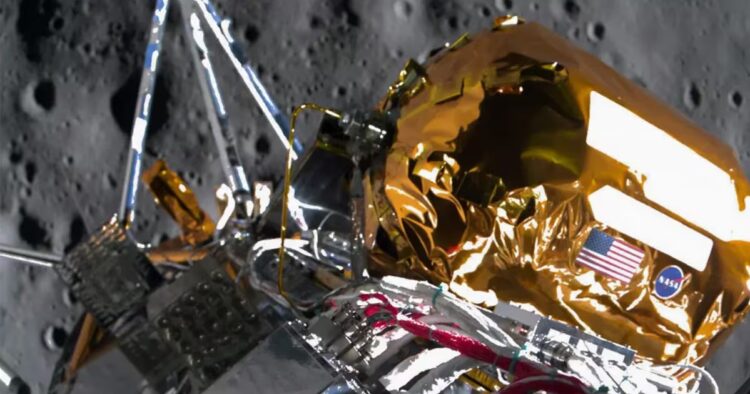In a recent development, NASA has taken a significant step forward in solving the longstanding challenge of navigating the lunar surface. They’ve come up with an innovative solution: building a ‘lunar lighthouse’. This lighthouse is designed to assist astronauts in guiding their spacecraft across the Moon’s terrain.
At the end of February, NASA successfully deployed the first Lunar Node, known as LN-1, on the Moon. LN-1 is a network of navigational beacons strategically placed across the lunar landscape. These beacons are intended to interconnect various spacecraft, including orbiters, landers, and astronauts themselves. This pioneering initiative, carried out aboard Intuitive Machines’ Odysseus lunar lander, aims to revolutionize how missions navigate and explore the Moon.
Despite facing challenges during deployment, such as the unexpected tilt of the Odysseus lander upon landing, LN-1 demonstrated its capabilities. After its deployment, LN-1 illuminated its beacon for a 30-minute trial period, showcasing its potential to guide future lunar missions. Although initial plans aimed for continuous transmission until February 29, LN-1 encountered operational difficulties due to the compromised position of the lander.
Interestingly, LN-1 played a crucial role in assisting the Odysseus lander during its descent. When the lander’s onboard navigation system experienced issues with laser rangefinders, engineers quickly utilized LN-1’s capabilities to guide Odysseus safely to its intended landing site. This demonstrated the system’s adaptability and reliability in real-time mission scenarios.
Looking ahead, NASA envisions LN-1 as the foundation of a comprehensive lunar navigation network. This network will facilitate seamless communication and positioning for various lunar assets, including orbiters, landers, and future astronaut missions. It promises to revolutionize lunar exploration by providing real-time digital verification of each explorer’s location relative to other components.
NASA’s ambitions extend beyond the Moon, with plans to adapt LN-1 for future Martian missions. Given the significant transmission delays from Earth to Mars, LN-1’s rapid data delivery capabilities could prove invaluable for navigating the Martian terrain.
Evan Anzalone, the principal investigator for LN-1 at NASA’s Marshall Space Flight Center, emphasizes the system’s potential to transform both lunar and Martian exploration. He envisions a future where LN-1 serves as a guiding beacon for every mission component, ensuring safer and more efficient exploration.
NASA’s successful testing of LN-1 marks the beginning of a new era in lunar navigation. As the agency continues to refine and deploy this groundbreaking technology, the prospect of sustained human presence on the Moon and beyond draws closer, driven by the ingenuity of NASA’s pioneering endeavors.

















Comments